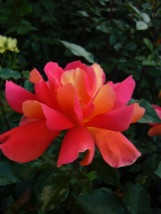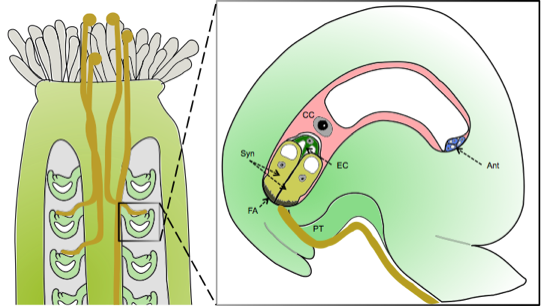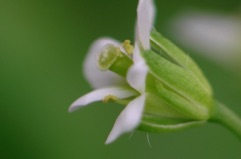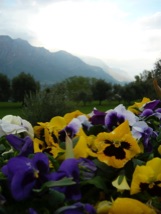
Pollination

Why study pollination?
In a world with no pollination, animals (including humans) would have little or no food for survival. Most plants that we eat reproduce through the production of seeds which are a direct product of pollination. The grains we use as flour for bread and pasta, rice for dinner, barley for beer, and feed for livestock are all seeds that come from flowers. Flowers on fruit trees must be pollinated in order for delicious apples, peaches, and pears to be produced. Over the course of evolution, plants have evolved different shapes and colors of flowers to allow for pollen to be carried by the wind or to attract pollinators such as bees and hummingbirds which then transport pollen to other flowers. Humans have selected some of these traits to breed the beautiful flowers that we plant in our yards. The environment can have severe effects on the success of pollination. Heat and drought lead to huge losses in crop productivity all over the world. As the climate of our world changes in the next decades, it is becoming more important than ever to understand the process of pollination so that we help plants to adapt and preserve our food sources.
What is pollination?
Pollination is a form of sexual reproduction, sperm cells are carried within pollen grains to reach egg cells which are buried deep within the female tissues. Just like in humans, the sperm cells carry one copy of chromosomes from the father and the egg cells carry the other copy of chromosomes from the mother. Pollination is the process that brings these cells together so that an offspring combining the genetic material of both parents is produced. Some species of plants can self-pollinate. Thls means that the sperm and eggs are produced in the same flower and can be brought together through pollination. Other species of plants must cross-pollinate because the male and female structures are on different flowers or the sperm and egg cannot be brought together for other reasons (self-incompatiblity, etc). In the second case, some flowers have co-evolved with insect pollinators that carry pollen from one flower to another.
Pollination in Arabidopsis thaliana
Arabidopsis thaliana (or Arabidopsis for short) is the fruit-fly of the plant kingdom. It is a weed that has several traits that make it a good model organism. It is a tiny plant that produces a lot of seeds (thousands per plant), it grows and flowers very quickly (around 6 weeks from planting to flowering), it has excellent genetic resources (a sequenced genome, a huge collection of insertion mutants in most of the genes), it can be transformed with Agrobacterium tumafaciens, and it is easy and cheap to grow in a small amount of space.
During sexual plant reproduction, pollen grains are produced in the anthers and deposited on the stigma of the flower. The pollen grains hydrate and each one sends out a pollen tube that grows by tip growth and carries the two sperm cells through the female tissues. The pollen tubes grow through the transmitting tract of the pistil and then emerge to find the ovules. Each ovule contains a female gametophyte (also known as the embryo sac) that contains the egg cell (EC on the figure below), the central cell (CC), 2 synergid cells (Syn), and 3 antipodal cells ( Ant). As pollen tubes exit the transmitting tract, they are guided to the entrance of the female gametophyte (the micropyle) and enter the female gametophyte to deliver the sperm so that double fertilization can occur to produce seeds. The synergid cells emit peptide signals called LUREs that attract the pollen tubes and then they communicate with the pollen tube to tell it to burst and release the sperm in a process known as POLLEN TUBE RECEPTION. The Kessler Lab studies the molecular mechanisms through which the synergid cell communicates with the pollen tube during this final stage of pollination.



Arabidopsis flower
Photos taken by S. Kessler
Diagrams drawn by Daniel S. Jones